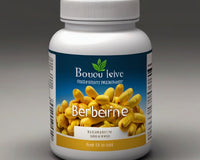Characteristics of soy protein concentrate (SPC)
The rough composition of SPC made by three processes is shown in the table. The most obvious difference is the lower ash content in SPCs prepared by acid extraction or hot water extraction, indicating more complete mineral removal. Approximately 5% to 10% of the carbohydrates remaining in SPC after leaching are soluble sugars, with the remainder being insoluble polysaccharides. The amino acid compositions of SF, ethanol or acid-extracted SPCs and ethanol-extracted soybean solubles are shown in Table 19.6. Among the essential amino acids, phenylalanine, tryptophan, methionine, and cystine are concentrated in the soybean soluble fraction during alcohol extraction.
| Components | Alcohol washing | Acid wash | Hot water wash |
|---|---|---|---|
| Protein (N × 6.25) b | 71.0 | 70.0 | 72.0 |
| Protein | 67.0 | 66.0 | 68.0 |
| Moisture | 6.0 | 6.0 | 5.0 |
| Fat | 0.3 | 0.3 | 0.1 |
| Crude fiber | 3.5 | 3.4 | 3.8 |
| Gray | 5.6 | 4.8 | 3.0 |
| Carbohydratesc | 17.6 | 19.5 | 20.1 |
- a
- Data are expressed as percentages.
- b
- Dry solids basis; all other data are expressed "as is".
- c
- Percent difference.
SPC is available as powder (95% to US No. 100) or granules (90% retention to US No. 60) and in refat or lecithin form. Typical bulk density: 0.40 to 0.45 g/cm3 (25 to 28 lb/ft3) for powders, 0.54 to 0.61 g/cm3 (34 to 38 lb/ft3) for granules, and 0.43 to 0.48 g/cm3 (27 to 30 lb/ft 3 ) for 9% lecithin products.
Per USDA-FNS requirements, SPC, SPI, and texturized SF and SPC used to meet certain meat or meat substitute requirements in domestic school lunches and child nutrition programs must have added vitamins and minerals. Separate fortification requirements exist for military ground beef applications (PP-B-2120B).
| Vitamins and Minerals | Minimum protein/gram |
|---|---|
| Vitamin A, SI unit | 13.00 |
| Thiamine, mg | 0.02 |
| Riboflavin, mg | 0.01 |
| Niacin, mg | 0.30 |
| Pantothenic acid, mg | 0.04 |
| Vitamin B6, mg | 0.02 |
| Vitamin B12, micrograms | 0.10 |
| Iron, mg | 0.15 |
| Magnesium, mg | 1.15 |
| Zinc, mg | 0.50 |
| Copper, micrograms | 24.00 |
| Potassium, mg | 17.00 |
Cereal products and their processing
Soy protein concentrates and isolates are important food ingredients in many processed food systems by providing the functional properties and sensory qualities required by manufacturers and consumers. They also provide nutritionally balanced, relatively low-cost, and high-quality protein that can be used alone or in combination with other protein sources. New techniques for removing undesirable soy color and taste have been reported, allowing the development of soy protein-based products with improved sensory qualities even at high levels of use. Various physical and chemical processes, such as extrusion and partial proteolysis, have modified the functionality of soy protein. and greatly expanded their applications in new foods.
Demand for soy protein products will increase as consumers become more aware of the relationship between diet and health, as well as the nutritional advantages of soy protein products such as low calories, high fiber and low saturated fat. However, it is important to note that expanding the utilization of soy protein products and successfully establishing a soy protein industry also depends on viable markets for other key ingredients, which in the case of soybeans is primarily oil. While soybean competes with many oilseeds in the vegetable oil market, soybean protein faces much less competition from other plant sources, primarily due to its mature market and developed technology.
Developing new foods based on phytonutrients
Compared to other protein sources, soy protein concentrate has higher nutritional value, is cheaper, and has more functions in food. Recent studies have shown that consuming soy protein can help reduce total serum cholesterol and reduce risk factors associated with various cancers, which has changed consumer attitudes towards soy protein. Due to its high-quality protein content, soy foods mainly appeal to vegetarians. Additionally, soy foods are a great source of omega-3 ( n -3) fatty acids. However, numerous studies have been conducted on the potential health effects of soy foods without considering their nutritional content. Soy foods are a rich source of phytoestrogens, although they are also found in a range of other foods. Studies of phytoestrogens have reported factors associated with risks including osteoporosis, heart disease, breast cancer, and menopausal symptoms. They are also specifically mentioned as endocrine disruptors because they may cause adverse health effects. Research has focused primarily on soy products and the phytochemicals in them, particularly isoflavones. Isoflavones are phytoestrogens or plant hormones. Genistein and daidzein are essential isoflavones in soybeans, and their structures are similar to estrogen. Therefore, isoflavones occupy some estrogen receptor binding sites, resulting in reduced estrogen effects and may promote the growth and spread of cancer.





